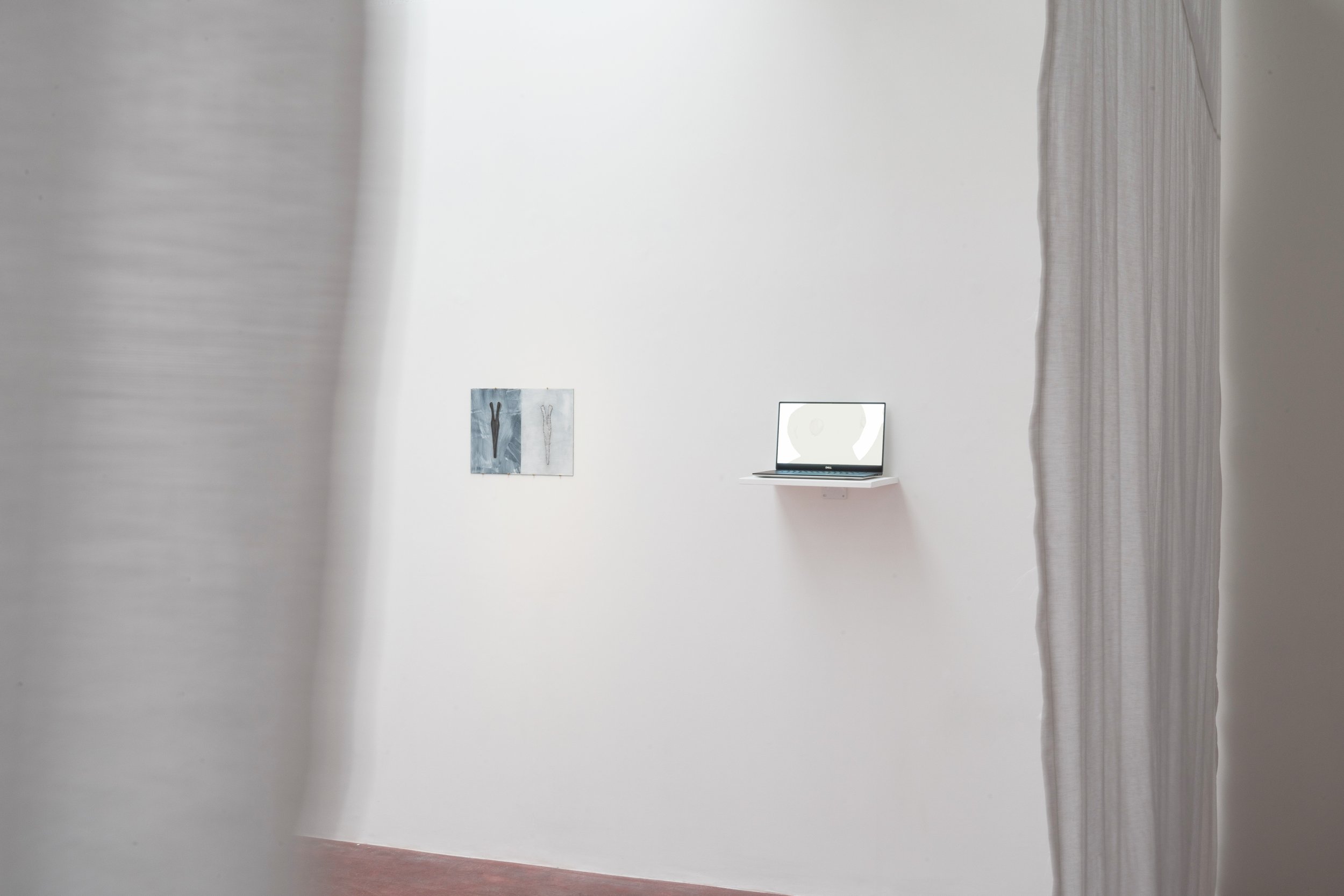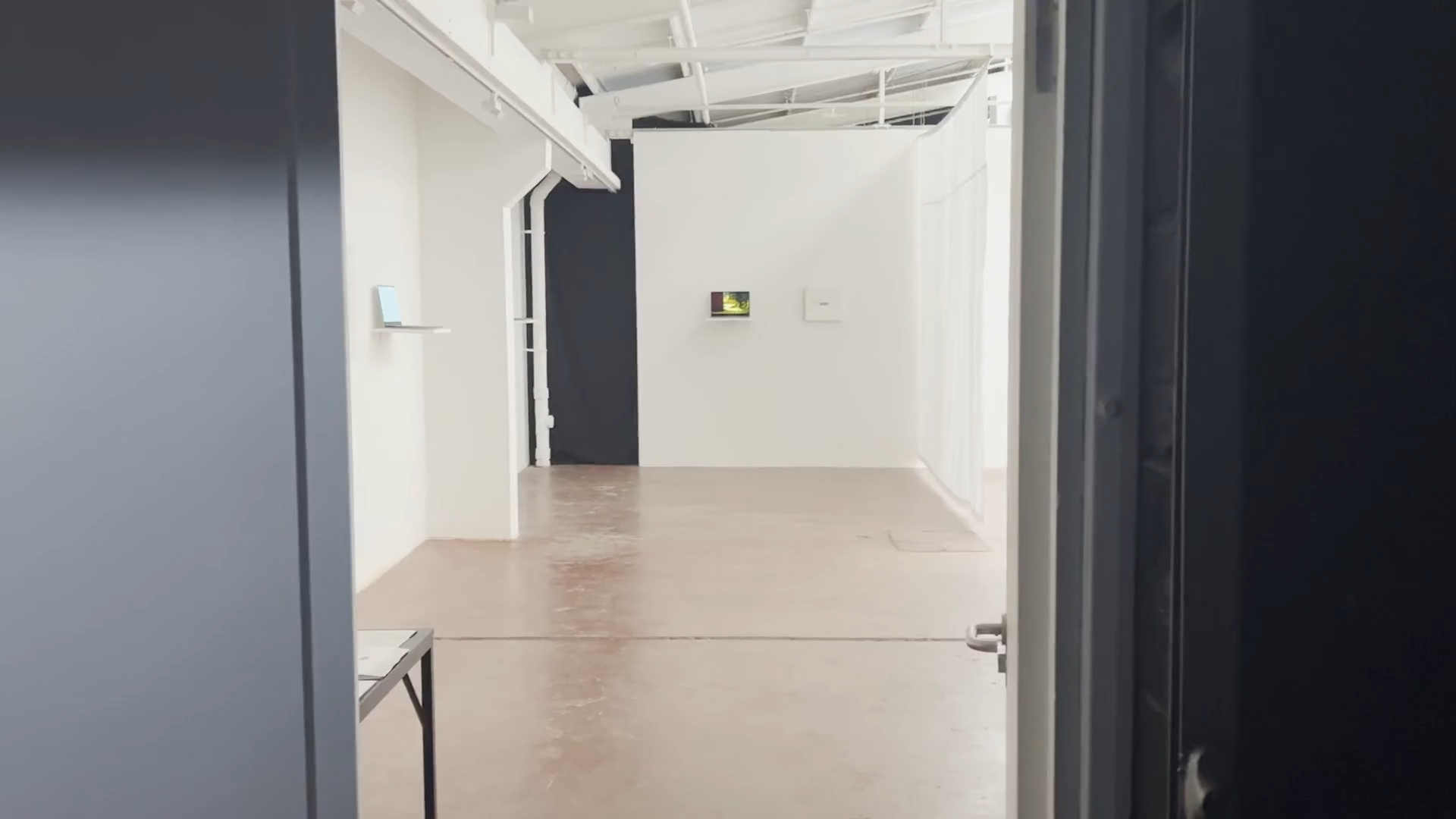





Contronym: Edith Dormandy and Julian Eleison
Greatorex Street, London, E1 5NF
PV: Nov 6, 6 to 8 PM; Open Nov 7-10, 10 AM to 6 PM
Edith Dormandy and Julian Eleison present "Contronym," a two-person exhibition of digital and non-digital painting. The two bodies of work are ostensibly different: Dormandy uses a traditional oil painting technique in works that are often austere in their compositions and colour schemes; Eleison makes screen-based digital paintings, and in a wide range of styles that tend to be colourful and painterly. This is perhaps related to the artists’ contrasting backgrounds: Dormandy's technique grew out of a classical atelier training, whereas Eleison is self-taught and previously made experimental videogames. But the clear differences between these two artists are ultimately somewhat reductive, if not misleading; they distract from the works’ more intricate and unexpected interactions, which form the heart of this exhibition.
At first blush, Dormandy’s work positions itself within the Western tradition of illusionistic and academic painting, whereas Eleison’s work seems to recall the stylistic fragmentation of contemporary painting in the present day. But each artist’s relationship with art history is a bit more complex: Dormandy’s work is consciously anachronistic, which is itself a contemporary position; Eleison’s work is consciously art historical--referring to East Asian art history in particular. When brought together, each body of work gestures toward the art historical logic of the other.
Dormandy’s engagement with the physical materiality of paint verges on the devotional, such that each of her paintings embed and describe their own history of labour and care. Eleison, too, attends to the particular qualities of digital paint, but instead structures his process around experimentation and intuition. While Dormandy’s work plays with the physical laws of vision, Eleison’s work plays with the physical laws of painting, oftentimes obscuring, if not inverting the traditional markers of time, methodology, and labor.
Despite their material and methodological differences, the two bodies of work function in similar ways: Both depend on a coherent figurative logic, both are autobiographical, both are meaningfully illusionistic. Even structurally, the two bodies of work mirror each other: Dormandy reflects on the specificities of paint, texture, light, and mark-making; Eleison reflects on the specificities of digital paint, digital texture, digital light, and digital mark-making. These two approaches to contemporary painting challenge and complement each other; they attest to the specificity, complexity, and range of painting as it is practiced in the present day.

